On January 31, 2015, Pope Francis designated The National Shrine of the Little Flower (Shrine) a minor Basilica[i]. Shrine, a Roman Catholic Church located in Royal Oak, Michigan, is named after Saint Thérèse of Lisieux. A recent visit to Shrine revealed much, not only about its rich history[ii] but, also about the future of our Humanity and its now dire need for peace.
As Shrine is dedicated to Saint Thérèse, the logical place to begin my sojourn was in the Chapel dedicated to her enduring legacy as a peacekeeper.
Saint Thérèse, born January 2, 1873, lost her Mother when only four and half years of age. She later wrote about the feelings her mother’s death had evoked:
When mommy died, my happy disposition changed. I had been so lively and open; now I became diffident and oversensitive, crying if anyone looked at me. I was only happy if no one took notice of me… It was only in the intimacy of my own family, where everyone was wonderfully kind, that I could be more myself.
While academically brilliant, formal schooling was emotionally uncomfortable because of her innate spirituality; a calling to serve God. It was this calling that prompted her, at just nine years of age, to write the Carmelite Order about her feelings. Saint Thérèse offered up a prayer: “Our Blessed Lady has come to me, she has smiled upon me. How happy I am.” Being so young, her Declaration of Faith was disregarded.
Initially, she questioned the rejection. “I thought I had lied – I was unable to look upon myself without a feeling of profound horror.” That year a doctor opined that Saint Thérèse had reacted “…to an emotional frustration with a neurotic attack.”
So grounded in her Faith, neither her tender age nor the opinions of others, impeded Saint Thérèse’s longing to transmitting the simplest of spiritual truths to others. Intuitively, she embarked on a journey toward enlightenment having grasped the intricate concept that before she could truly serve God’s messengers she had ‘strip herself of herself’ of her Ego. Saint Thérèse’s strength to endure the loneliness experienced during this period of conscious inner exploration came from only from prayer and sacrifice[iii].
In her thirteenth year, Saint Thérèse went on Pilgrimage to Rome. Escorted by a large contingency of French aristocrats and her friend Céline, she later reminisced:
Céline and I found ourselves mixing with members of the aristocracy; but we were not impressed. The words of the Imitation, ‘do not be solicitous for the shadow of a great name’, were not lost on me, and I realised that real nobility is in the soul, not in a name.
She concluded, “…they were none the less men and still subject to human weakness[iv].”
On the Christmas Eve of her fourteenth year, Saint Thérèse experienced the profound Grace found only in Divinity. The sadness she had clung to for nine years over having lost her Mother was dispelled in that moment. “God worked a little miracle to make me grow up in an instant. I recovered the strength of my soul.”
Saint Thérèse had discovered inner peace. Unless one is peace inside, one cannot be peace for others. Dwelling in state of inner calm, she began serving as God’s messenger. “She wished to give one thousand lives in order to save one soul[v]”. Her delivery was so serene that others soon began calling her the “Petite Voie” or “Little Voice”[vi].
This led to a Papal audience with Pope Leo XIII when she was only 15 years old. The Pontiff gave his blessing for her to enter the French Discalced Carmelite as a novice postulant. From the beginning, St. Thérèse “wanted to be unknown”. She had no desire for external applause or compliments and was immune to criticism. She was free.
At 22, she was fully ordained as Sister Françoise-Thérèse in the Order of the Visitation of Holy Mary at Canean, where she lived out her days. Drawing on nature for inspiration, she wrote about the way of spiritual childhood:
- “Oh Jesus, I ask for peace … ℙeace, above all, LOVE … love without limit.”
- “Love proves itself by deeds, so how am I to show my love? Great deeds are forbidden me. The only way I can prove my love is by scattering flowers and these flowers are every little sacrifice, every glance and word, and the doing of the least actions for love.”
- “I applied myself especially to practice little virtues.”
- “My way is all confidence and love.”
- “My mission is … To teach souls my little way … The way of spiritual childhood, the way of trust and absolute surrender[vii].”
- “Allow me to save very many souls; let no soul be lost.”
Saint Thérèse rejected dogma:
Sometimes, when I read spiritual treatises in which perfection is shown with a thousand obstacles, surrounded by a crowd of illusions, my poor little mind quickly tires. I close the learned book which is breaking my head and drying up my heart…I see that it is enough to recognize one’s nothingness and to abandon oneself, like a child, into God’s arms. Leaving to great souls, to great minds, the beautiful books I cannot understand, I rejoice to be little because only children, and those who are like them, will be admitted to the heavenly banquet.
Desiring a cloistered life, she taught only those she encountered in the Convent. One of her teachers, Father Adolphe Roulland[viii] wrote, “It is quite clear that Thérèse … is a teacher and the giver. It is she who consoles and warns, encourages and praises, answers questions, offers corroboration, and instructs the priests in the meaning of her little way.”
Stricken by tuberculosis at 24, Saint Thérèse continued writing. “We should not say improbable things, or things we do not know. We must see their real, and not their imagined lives[ix].” Prior to succumbing to death that year, she prayed, “I do not intend to remain inactive in Heaven, my desire is to continue working for the Church and for souls. It is what I ask of God and I am certain he will grant it[x].” Saint Thérèse passed away on September 30, 1897.
Saint Thérèse was not only remembered for her acts of charity, but for her ability to silently accept even the harshest of criticism, even that unjust.
One year after her death, “l’Histoire d’une Âme” (The Story of a Soul), a book of her writings was published. Her teachings quickly spread. Her prayer to continue serving the living after her death was heard as her writings serving as a spiritual map for world peace.
“The holiness of Thérèse is not based on extraordinary phenomena. It consists of “doing ordinary things in an extraordinary way!” Her simple words found their way into the hearts of many Cardinals, Bishops, and Religious Superiors. They successfully petitioned Pope Pius X, who began the canonization process in 1914. Saint Thérèse was canonized by Pope Pius XI on May 17, 1925[xi] during a ceremony attended by over 500,000 at which time she was given the name of Saint Thérèse of Lisieux.
Her selfless, gentle service to others has continued to be recognized by numerous Pontiffs. On October 19, 1997, Pope John Paul II, declared Thérèse the thirty-third Doctor of the Church, the youngest person and, at that time, only the third woman to be so honored. Most recently, Shrine was named a minor Basilica.
This takes this paper back to the Shrine of the Little Flower, founded by Father Charles E. Coughlin in 1925, just prior to the canonization of Saint Thérèse of Lisieux[xii]. On March 17, 1936, on the anniversary of Saint Thérèse canonization and a mere two weeks after opening the doors to a newly constructed wooden church, the Ku Klux Klan set fire to a cross on its lawn destroying the humble structure. Its present home, an imposing Art Deco structure, was completed between 1931 and 1936. Originally, it was intended as a message to the Ku Klux Klan that this was a cross that could not be burned.
Construction was funded by Fr. Coughlin’s radio ministry, which ran from the 1920s through the 1969s. Fr. Coughlin was a polarizing figure. Whether people agreed or disagreed with his views, by fearlessly speaking the truth as he understood it, not only to the masses, but to leadership, he inspired conscious global thinking[xiii]:
- “The people have spoken and the only…thing to do is abide by the will of the people.”
- “We shall barter our sovereignty as a free, independent nation or accept the decisions of a World Court as a super-nation to manage our affairs.”
Fr. Coughlin’s words that the leadership exists solely to serve those people it represents are as true today as they were when first spoken.
As one circumnavigates Shrine, there are many niches to be explored. In one niche, are carved the words “King of the Nations. Keystone. United that Which is Divided”. Off to its side, are inscribed the Old Testament words of John 15:4, “Abide in Me and I in You. As the Branch Cannot Bear Fruit in Itself Unless It Abide in the So Neither Can You Unless You Abide in Me.”
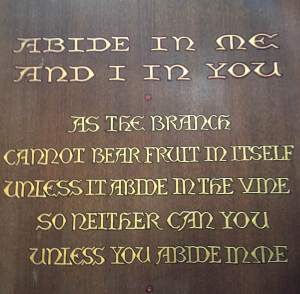
Shrine is most recognized by its 28 foot or 8.5 meter Crucifixion Tower. Its limestone face is carved with the image of Jesus, and the “Seven Last Words” Jesus spoke while on the Cross:
Forgiveness, Salvation, Relationship, Abandonment, Distress, Triumph, and Reunion[xiv].
At a time when humanity is crippled by historical religious hatreds, the first six words are the path to peace, or to a “Reunion” as “One, the seventh word.
It is no coincidence that Saint Thérèse of Lisieux, is affectionately referred to “The Little Flower of Jesus” or simply “The Little Flower”[xv], as “Little Flower” means to gather, related to Religare, the Latin root of religion, which translates to ‘bind forth and bring together’.
Reunion.
[i] “Pope Francis bestowed The National Shrine of the Little Flower in Royal Oak with honorary title of Minor Basilica”, January 31, 2015, The Archdiocese of Detroit, as found on the www at http://www.aod.org/our-archdiocese/newsroom/news-releases/2015/january/pope-francis-grants-national-shrine-of-the-little-flower-honorary-title-of-minor-basilica/(“The title is given to churches around the world to denote a particular importance in liturgical and pastoral life and a closer relationship with the pope. The title of Major Basilica is reserved to churches in Rome… Shrine is now one of 82 churches in the United States — and only the second church in Michigan — to hold the title of Minor Basilica…. In 1998, it became one of the first five churches in the country given the National Shrine designation by the United States Conference of Catholic Bishops.”); “Pope Francis names Shrine of the Little Flower a basilica”, February 4, 2015, Detroit Free Press, as found on the www athttp://www.freep.com/story/news/local/michigan/2015/01/31/pope-names-shrine-basilica/22657465/.
[ii] “Historical Overview”, National Shrine of the Little Flower, as found on the www at http://www.shrinechurch.com/history-of-the-church/.
[iii] Vaughan-Lee, Llewellyn, The Bond With the Beloved, pg 1-28, Golden Sufi Center (1993)(With frequent references to the Old Testament, the first chapter discusses the path toward enlightenment or awakening).
[iv] Saint Thérèse epitomized teachings predating even the birth of Jesus. For instance, “Moses and the Shepherd” instructed:
“I look inside at the humility…God has revealed to methat there are no rules for worship.Say whatever and however your loving tells you to.Your sweet blasphemy is the truest devotion.Through you a whole world is freed.Loosen your tongue and don’t worry what comes out.It’s all the light of the Spirit.”
“Moses and the Shepard” was taught by Rumi, or Jalāl ad-Dīn Muhammad Rūmī, was a 13th-century Persian poet, jurist, Islamic scholar, theologian, and Sufi mystic. Barks, Coleman, “The Essential Rumi”, pg. 165-171, Harper-Collins, Quality Paperback Book Club Edition, New York, New York (1995).
Moses, to whom the Ten Commandments are attributed, predated the birth of Jesus, the Prophet Muhammad, and the Buddha. See Lardner, Cynthia, Game of Thrones, January 18, 2015, as found on the www athttp://cynthialardner.blogspot.com/2015/01/isis.html?m=1.
Saint Thérèse epiphany reflects the New Testament writings of St. John of the Cross, revered as the golden book or “The Imitation of Christ”, in which spiritual asceticism is taught. In John 3:3, “Most assuredly, I say to you, unless one is born again, he cannot see the kingdom of God.”, and John 7:38, “Whoever believes in me, as the Scripture has said, ‘Out of his heart will flow rivers of living water’.”
This is the Jesus Model. Jesus washed the Apostles’ feet at the Last Supper. “Very truly I tell you, no servant is greater than his master, nor is a messenger greater than the one who sent him.” John 13:1.17.
[v] Sanctuaire de Lisieux, 2015, as found on the www at http://www.therese-de-lisieux.catholique.fr/To-save-souls.html.
[vi] Mother Teresa of Calcutta was born on 26 August 1910 in Albania, part of the Ottoman Empire. Her given name, no coincidence, was Anjezë Gonxhe Bojaxhiu, which translates to “little flower. Like Saint Thérèse, her calling to serve God came at by age 12. Mother Teresa who devoted herself to serving the poor, like Saint Thérèse, had rejected dogma.
Mother Teresa died in 1997. On Oct. 19, 2003, Pope John Paul II beatified Mother Teresa of Calcutta, bestowing on her the title “Blessed.” A second miracle is required for her to proceed to canonisation.
[vii] Taylor, Rev. Thomas N., Saint Thérèse of Lisieux, The Little Flower of Jesus, New York: P.J. Kennedy & Sons, 1930, 271-274, as found on the www athttp://www.ewtn.com/therese/readings/readng2.htm (During the Homily given by Pope Pius XI at the Canonization of St. Thérèse on May 17, 1925 the Pontiff referred to Saint Thérèse as having lived a “’spiritual childhood’. That spirit consists in thinking and acting, under the influence of virtue, as a child feels and acts in the natural order. Little children are not blinded by sin, or disturbed by the passions, and they enjoy in peace the possession of their innocence. Guiltless of malice or pretense, they speak and act as they think, so that they show themselves as they really are.”).
[viii] Infra Endnote v (“Father Adolphe Roulland, of the Paris Foreign Missions, left for Su-Tchuen in China, from where he also corresponded with Thérèse. Before leaving, he had celebrated a First Mass at the Carmelite Convent in Lisieux and had a conversation with his “sister”. She wrote him six letters. He died in France in 1934…[He] helped Thérèse to widen her horizons of the world.”).
[ix] In Moses and the Shepard, it is written that, “When you eventually see through the veils to how things really are, you will keep saying again and again, “This is certainly not like we thought it was!”.”
[x] Infra Endnote v.
[xi] Taylor, Rev. Thomas N., Infra Endnote vii.
[xii] Saint Thérèse of Lisieux became the moon lighting the way for Fr. Coughlin to metaphorically shine[xii]. In religious iconography, extending well beyond Christianity, a halo is always found, not only behind Jesus, but also in the images of prophets and saints. The Symbolism extends further, as it is in times of darkness, that God lights the way for all people, including His messengers.
The symbolism has been taught in virtually every culture in the story of the sun and the moon. The moon represents God and the sun, Jesus. God loved his people so much that he sacrificed His own Son, Jesus, so that humanity might find its way during time sof darkness. Seehttp://youtu.be/Y2HQVwSTtRY to learn more about the story of the sun and the moon.
[xiv] Psalm 22.
[xv] “Whosoever is a little one, let him come to Me.” Prov. 9:4.
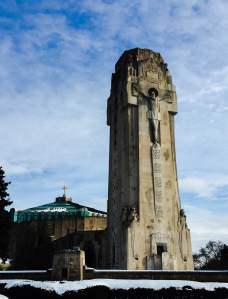

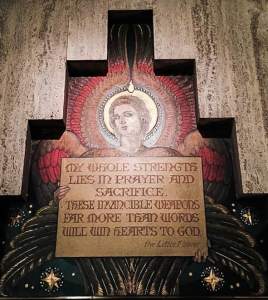
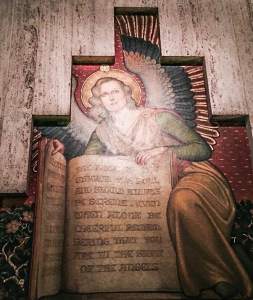
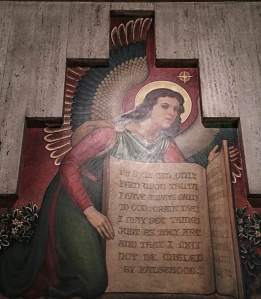
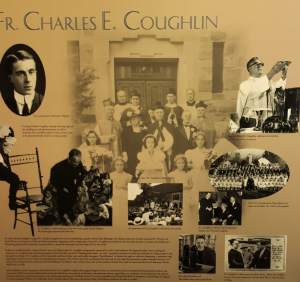
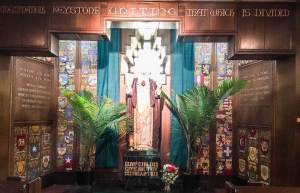
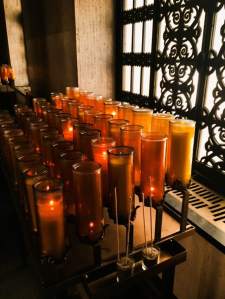
No comments:
Post a Comment